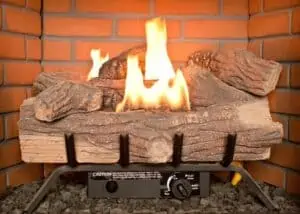How to Install a Gas Fireplace Insert?
Whether you’re converting a traditional wood-burning fireplace or you’ve purchased a new house with an existing fireplace, installing a gas fireplace insert is a worthwhile investment. Not only is it a convenient way to heat your home during the cold winter months, but it can also add an element of style to your living space.
(Searching in Google “gas fireplace maintenance near me“? Contact us today!)

There are many different types of gas fireplace inserts. Some are pre-built, while others require some work on your part. They come in all different sizes and styles, from the traditional fireplace to a sleek, modern unit built into the wall. Some are even ventless and do not require an existing chimney.
While the installation of a gas fireplace insert may seem like a straightforward task, there are some safety concerns that should be considered. First and foremost, you should have a professional install your unit. This is especially true if you have never installed a gas fireplace before. The company will perform a pressure test to ensure that your chimney is up to code. Also, they’ll install an oxygen sensor, which will turn your fireplace off in the event of a carbon monoxide leak.
For example, a gas fireplace with a built-in blower is a convenient way to circulate air in a room. A remote control system can be installed to turn your fireplace on and off, as well as control the temperature. Some even come with an optional Wi-Fi module that can be connected to your smart home system.
The best gas fireplaces will have an efficiency rating of 99% or better. They should also meet EPA clean burn standards. You’ll want to check your fireplace every year to make sure it’s working correctly. The average cost for an annual checkup will run between $50 and $150.
The best inserts are also the most efficient. A gas fireplace with a built-in blower can provide you with home heating during the winter months. You can also use the unit to heat up your guests or residents. Some models come with timers to make sure the flame stays at the right level. You’ll also want to make sure your fireplace screen is clean.
While the simplest gas fireplace inserts are simple to install, a more complex unit may require some structural modifications to your hearth. The fireplace may also need to be insulated to help reduce the loss of hot or cool air. The insulation can be done in many different ways, including adding a layer between the flue pipe and the vent liner. Some installations will even include glass doors, which can be used to add a bit of class to your home.
The best gas fireplaces will come with an energy-efficient blower, a control system that lets you adjust the temperature and the presence of ember lights. They are also often outfitted with automatic shutoffs. These types of fireplaces are more energy-efficient and less expensive to run than a conventional wood-burning fireplaces.
The best gas fireplaces are also safe to operate. In fact, they’re the safest way to get pollutants out of your home.

